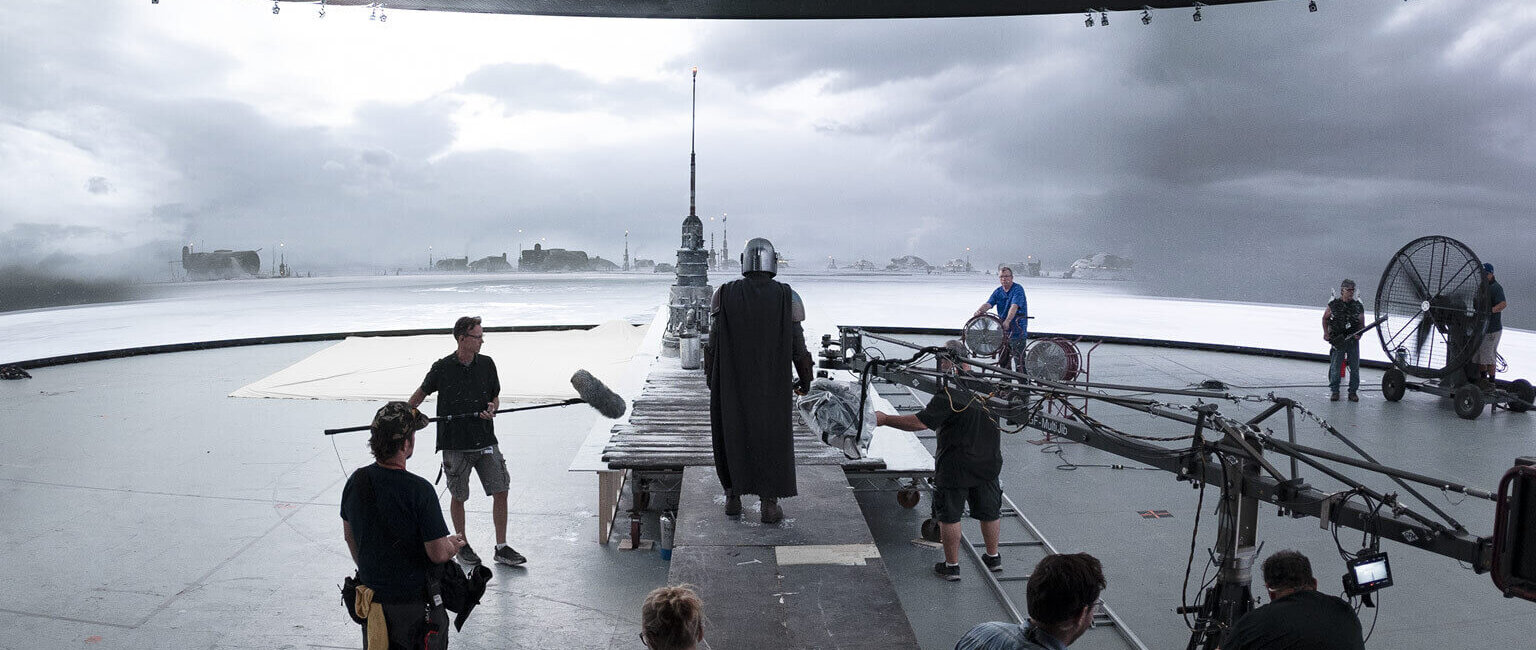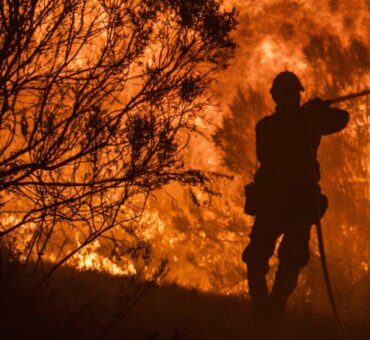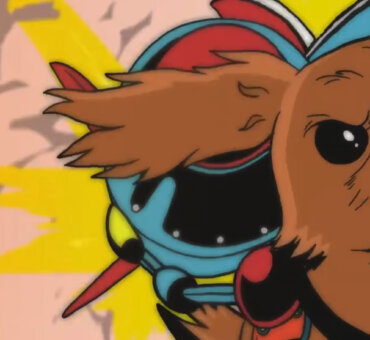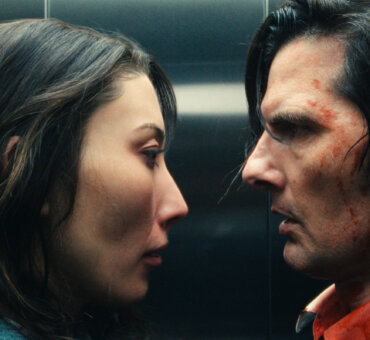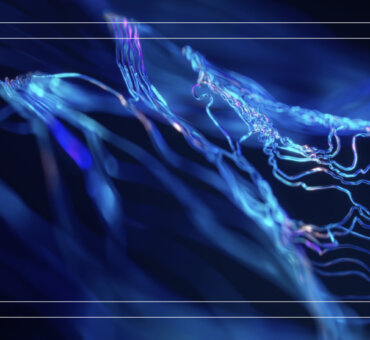When the first season of The Mandalorian was released, it broke all sorts of barriers. Perhaps outside of Game of Thrones, it was one of the first televised series to carry a production value that could rival any feature film. A big part of this was due to “the volume” created by the team at Industrial Light & Magic. The volume is an LED screen system that can mimic any environment, tracking with the camera to create realistic settings in-camera. In other words, it’s doing away with a green screen and putting production back in real-time. You can see it in action here.
When you combine this new technology with a serialized production, you get a recipe for all kinds of innovation and creativity. Things can change week over week. Crews can mess with their new tools between episodes. For the editors on this series, it was the same as well, testing out new workflows and techniques to create something that had never really been done before, at least not at this level. And they pulled it off.
For The Rough Cut’s YouTube channel, all four editors grouped up to talk through the production of the show’s first season—Andrew S. Eisen, ACE, Jeff Seibenick, Dana Glauberman, ACE, and Dylan Firshein. Their hour-long conversation is an astounding look into the future of editing, and how they used traditional and non-traditional techniques to create one of the most innovative new series of our time.
Because we love film, editing, and Star Wars, we took some time to listen to their conversation and take a few notes on what stood out to us. Here are 5 takeaways from the editorial side of The Mandalorian.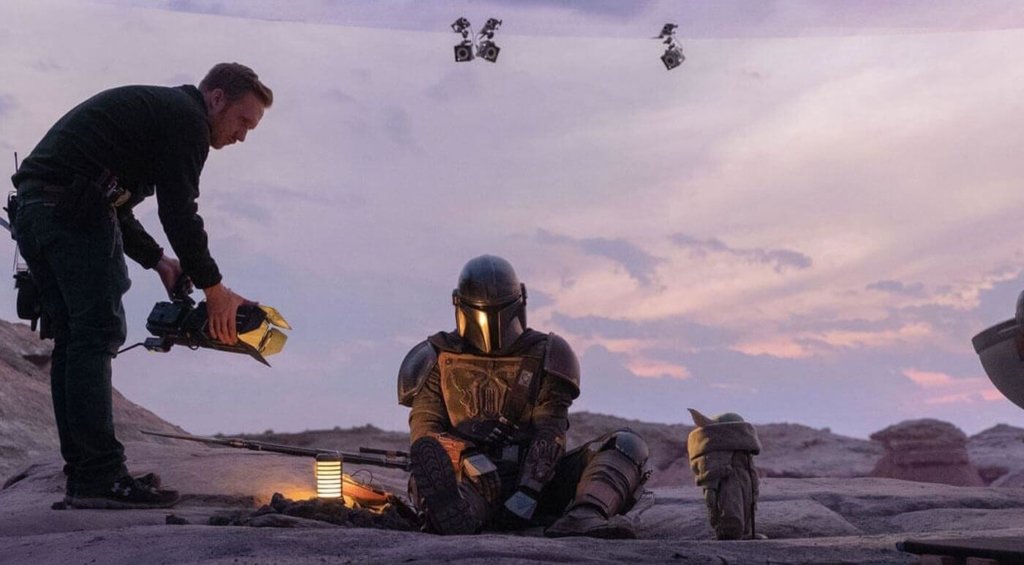
1. An Editor’s Role is Changing
An editor’s role is never going to be the same. Gone are the days where editors are handed footage after a project is shot. Now, directors can create and mimic environments in real-time. Because of this, editors now play a role earlier in the process. Using storyboarding and pre-vis, the Mandalorian editorial team actually worked with the Director and crew on things like where actors would be in the volume and how the shots would be captured, not the other way around.“We have to use it as a writer’s room in a way, because we’re pre-cutting an episode—so, storyboards, then as pre-vis, and then as it’s finally shot,” Dylan said.
Dana and Jeff explained the unique process of working with the volume further. “There were some challenging moments, cutting with pre-vis,” Dana said. “I didn’t have a great amount of experience with visual effects prior to this, so trying to imagine where the ATST is and what the ATST is…”
Because of this unique workflow, the editors would come to the volume with pre-vis intact, showing the directors the different story beats and entry points for any given scene. Jeff described it as a reverse editing and directorial process. Andrew explained that the editors had to think through the scenes before they were even shot, mapping it out from start to finish.
“We have to do the whole episode from beginning to end—dialog scenes and everything, because they are mapping out every single moment of every stage,” Andrew said. “When you think of the Werner Herzog scene in episodes one and three, his office is not real. He’s got a desk and that’s it. We had to plan for that.”
Ultimately, this meant that the editors needed to be close by for the actual production, not just in post-production. Andrew mentioned that there were several times when Jon Favreau would call him from his office to the volume, and they’d solve editorial problems during production in real-time because the volume offered that opportunity.
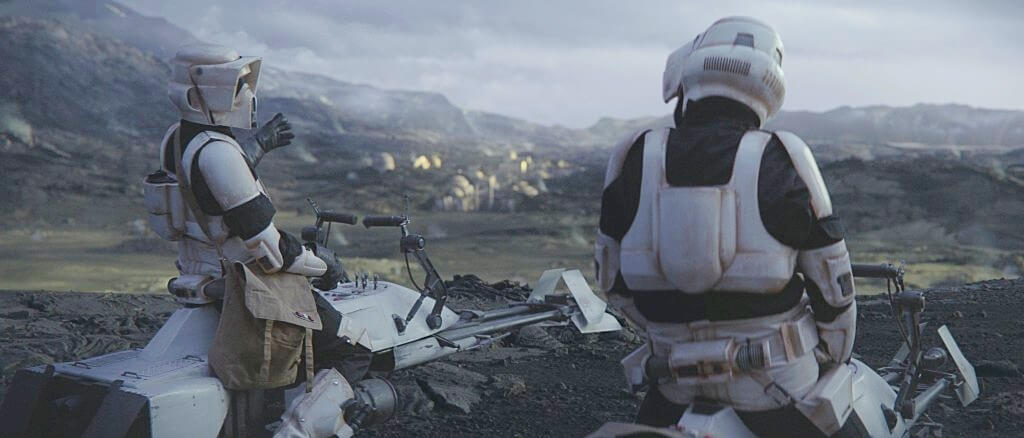
2. Editors Have a Valuable Outside Perspective
Another topic that came up was the matter of perspective. If you’ve seen The Mandalorian, you know that it’s very “Star Wars” but also stands alone stylistically. The editors described this as intentional—the directors and producers handpicked them because they knew they brought their own editorial style to the project, and they’d give each episode its own personality. Andrew pointed out that he wasn’t even a Star Wars fan coming into this process, and that was intentional:“They wanted someone who had an outside point of view,” Andrew said. “They didn’t want a Star Wars movie per se, they wanted it to be a little more free-form and have everyone’s unique style.”
Of course, this didn’t mean there weren’t editorial rules to the whole operation. The production team was very specific about certain stylistic decisions, and at the beginning, they wouldn’t use any crane shots or panning shots that George Lucas couldn’t have captured in 1977—although those rules loosened over time. The editors used the famous wipe transitions to harken back to the original trilogy, and Jeff described the process of making the series familiar but not a fan film, either.
“I never temp-ed with Star Wars music, even though the music is a huge part of the Star Wars universe,” Jeff said. “Basically, what we did was go off of the established style of Star Wars… but we changed the music. The story is the same and the sound design is the same. Everything else just fell into place. If we do it exactly like Star Wars, then we’re just making a fan film. We’re trying to make our own film. You think of Star Wars as the basis for the inspiration and everything else just blossoms from there and now it’s its own thing.”
Dana explained that wipe transitions were used very intentionally, tracking characters in the direction they were moving on the screen (they were specifically inspired by this transition from A New Hope). Overall, the editorial team held closely to certain rules, but also were intentional about breaking others, and ultimately struck the perfect balance between a familiar universe and a new setting.
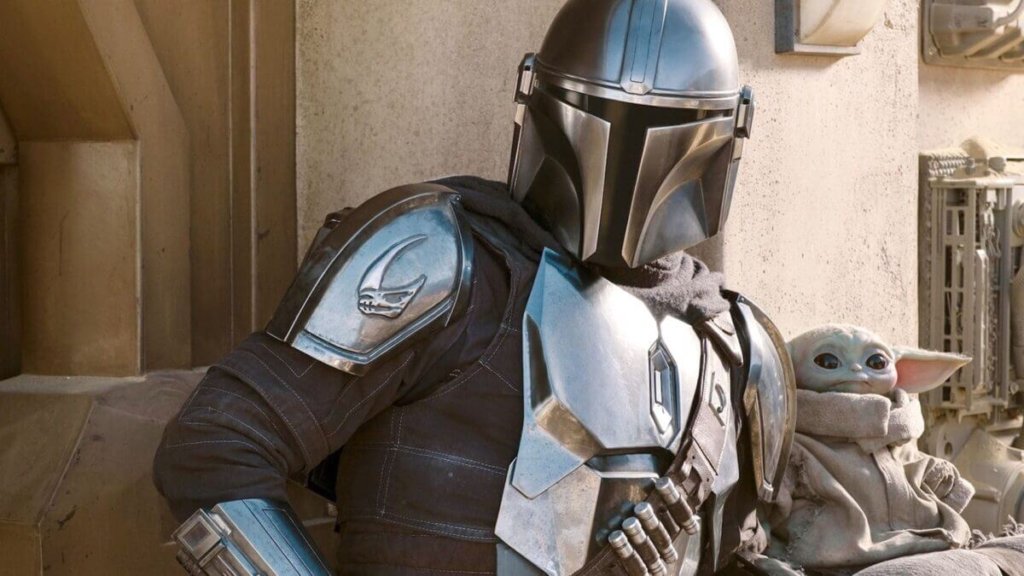
3. Fight for the Scenes That Matter
In one specific moment during the conversation, Andrew described the first episode with the child (a.k.a. “Baby Yoda,” a.k.a. “the little green guy”) and how difficult it was to nail down the emotional side and humor of their relationship. In a way, the entire series depended on them getting those moments right, and everything else would fall into place.“Rick [Famuyiwa] and I did rework it a lot. We spent a lot of time in the editing room after the episode was shot. In fact, Jon was kind of concerned. There wasn’t a lot of dialog in the episode and it didn’t at first feel like it was doing what it needed to do to sell this relationship,” Andrew explained. “We worked it and worked it like a piece of clay. We kept trying to find the humor in the episode, trying to find the heart.”
It’s easy to think that a big action sequence would be the most pivotal for a series like this one, but it’s quite the opposite. Those small, character moments give the action sequences weight, the emotional equity the audience needs to actually care about what’s happening on screen. So, Andrew fought for those moments, convincing Jon Favreau to spend more time with them than he thought was necessary.
“We spent a lot of time in the opening scene—not the fight with the bounty hunters—but a scene where he’s repairing himself after that fight,” Andrew said. “Really elongating that scene. Really employing close-ups on the baby staring at Mando and watching Mando trying to empathize with him as he’s really wincing. We repeated that scene a lot. At one point, Jon said that the scene was too long, but I pushed to keep it playing long. If you had the patience, I thought it would really have some heart and it did.”
This is such a great example of how pivotal every scene is from an editorial standpoint. There are no throwaway moments, particularly when it comes to character development. It’s an investment that will pay off as long as you can convince your audience to invest along with you.
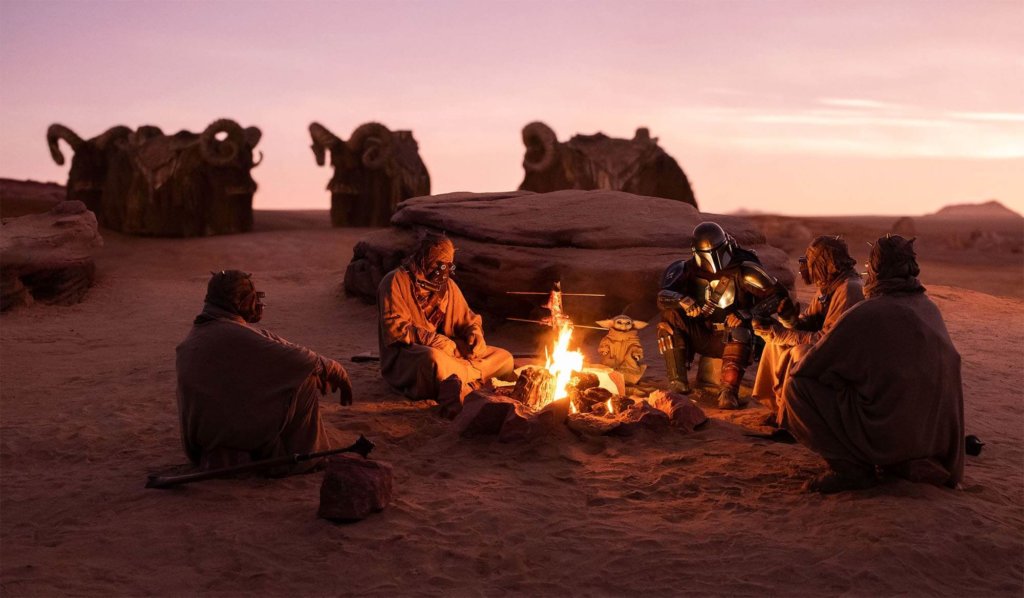
4. Hard Sell Through Pre-Vis
Jeff explains the lengths he went to in pre-vis to make sure he was selling his vision to the director for each episode:“One thing we had to do was sell each scene with every tool that we had. You’re trying to make this work with what you have, and that’s pre-vis, and green screen, and actors, and video walls. You sell it as the most finished product that you can—sound design, music, comps, temp effects,” he said. “We had a bin of temp lasers. If you do an edit without knowing where the lasers are going, you’re not selling the scene. I spent a day just putting lasers in, so you can know who’s shooting at what. You really did have to rely on the Avid and the effects that are in there because you had to sell every scene as quickly as you could. Otherwise, what are you going to send the VFX people? What are you going to show to the producers and directors if it’s super temp and rough?”
The editorial team also pointed out that they had to be incredibly intentional with their pre-vis, particularly when it came to reshoots, so they could convince production that it’d be worth the cost and work. One example of this was a campfire scene with two characters that weren’t ever on scene together during the shoot.
“I don’t think I could have sold my rework of that [campfire] scene if it was just slopped comps. They just wouldn’t have seen it. I made it look invisible. Not to toot my own horn, but that was the only way I could get it to sell,” Andrew pointed out.
A lot of work ahead of time can both save your work on the back end and help save a scene that’s not working. It’s tempting for a production to skip revisions if costs are rising, but if an editor comes to the table with visual proof that it can be better, it can change minds quickly.
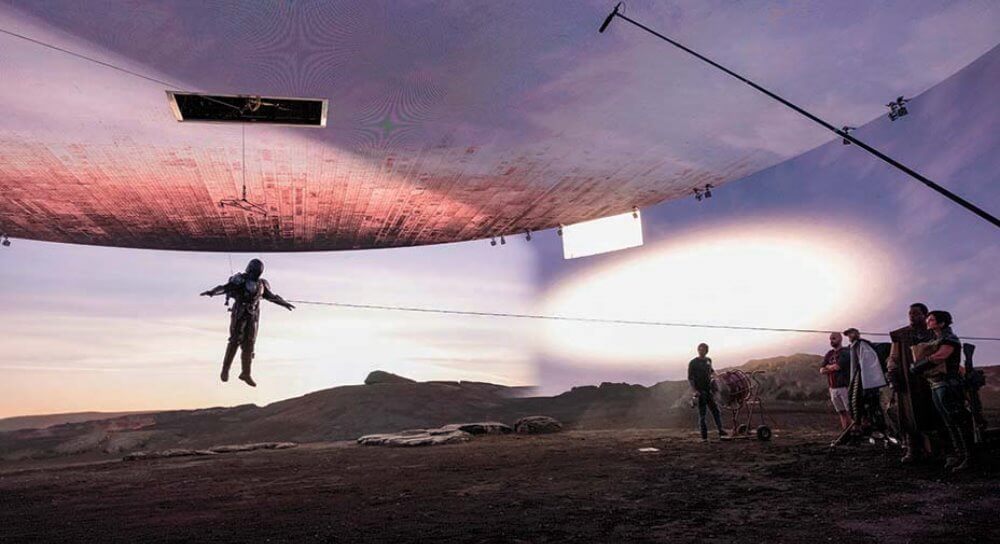
5. Editors Aren’t Going Anywhere
With all of this new technology, it could be easy to think that an editor may not be needed as heavily in the future. If a director can make changes in real-time, won’t the final product be easier to achieve without hundreds of hours on the cutting room floor? Short answer: no. In fact, the volume and technology like it can create new problems that editors need to solve, as well as create new opportunities.“Without facial reactions for the Mandalorian, it’s all about tiny little head move or the littlest gesture of some sort. It’s all about that,” Dana pointed out. “The beauty is you could pull from anywhere in the take, but it doesn’t necessarily have to be exact…it’s just like a reaction shot. When they’re on the volume, I find it so much better for their performances instead of being on a blue screen. They feel like they’re in the environment. They feel like they are where they’re supposed to be because of the surroundings. The video just put them in the place. I find their performances are a little more natural a lot of the time because they don’t have to imagine where they are.”
New technology can serve the actors and the production, which can make the process even easier and more rewarding for editors. And, in the end, you can’t replace the instinct that comes with being an experienced editor. There’s an intangible element that can’t be replicated with software.
“The scene where Baby Yoda is trying to play around with all the controls, there’s no dialog in there until Mando says, ‘Stop touching things.’ That is literally a scene where you have to create moments and try and build. It’s all about timing,” Dana said. “For me, that timing is instinctual. It’s not easy to figure out where to cut and what reactions to use and what moments to use and how long to make the scene. But, at the same time, if you’re trying to get a point across, you use your instincts where to cut.”
The Mandalorian may be changing many things, but not how essential an editor is to a production. In fact, editors will need to be even more involved, thinking through every scene before they’re shot, wearing the hat of a director in some ways. We’ve always known editors have thought this way, but now audiences are going to see it on screen. And that’s an exciting proposition.
Read more editorial tips from Richard Pearson, editor of Wonder Woman 1984, Quantum of Solace, and The Bourne Supremacy.
